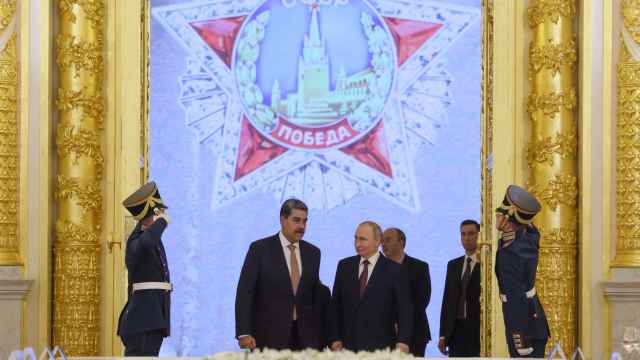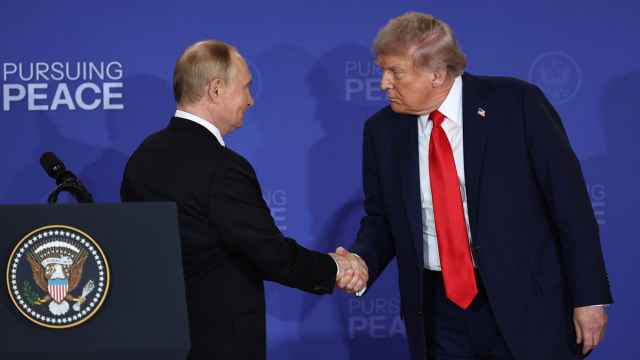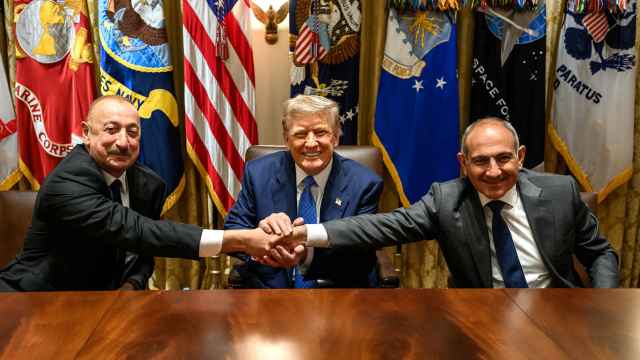Similar to the phoenix, the firebird is an icon of resurrection and renewal. But the Russian fairy-tale bird can be both a blessing and a curse.
One of the most famous firebird stories is Igor Stravinsky’s ballet “Firebird.” Prince Ivan wanders into the magical kingdom of Kashchei the Immortal, where he captures the firebird. When the prince meets 13 princesses and falls in love with one, the firebird agrees to help him and explains that Kashchei keeps his immortality in a giant egg. Once Ivan smashes the egg, destroying the despot, the magical kingdom disappears and everyone wakes up to become real people.
Now let’s retell the story, replacing Ivan with the investor; the magical kingdom with the market; Kashchei with the United States; and the egg with ratings.
With Russia playing the role of the firebird, you have a picture of today’s international debt markets.
Three years ago, emerging markets were considered the high-risk domain of the specialist investor, while retail investors were advised to keep most of their money somewhere safe like U.S. treasury bills. The credit crisis has turned the world on its head.
While foreign investors and economists remain cautious on Russia, the rapid development of the local ruble bond market belies this stance and highlights the remarkable transformation the country has made. One of the leading candidates for default in 2009 is now one of the safest bets in the world.
The volume of Russia’s domestic bond issues almost doubled in size recently and is headed toward pre-crisis levels. At the same time, credit quality remains high as leverage is still low both at the sovereign and corporate level. Therefore, there is still upside for investors as continued corporate deleveraging and improving credit metrics will support further spread tightening, while declining inflation will drive a broad market rally.
Meanwhile, financial distress in the euro-zone periphery is forcing investors to radically reassess credit risk. The United States enjoyed a triple-A rating until last week because it has never missed a payment in the 94 years it has been a sovereign borrower. But that doesn’t mean it won’t default now. The cheap finance from the decade-long bull run in bonds in the developed world is coming to an end. With it, the structural deficits caused by overly generous pay-as-you-go pensions and cheap mortgage finance will only increase.
That the U.S. debt-ceiling deal was allowed to go to the wire highlights the seismic changes under way. Developed markets are supposed to be paragons of stability and U.S. T-bills are supposed to be the gold standard of reliability. Where is that stability and reliability now? If the emerging markets were marred by political risk in the not-so-distant past, today the global economy is threatened by instability in Washington.
Russia doesn’t have any of these problems. The economy is among the world’s least leveraged, and with corporate and household debt of 40 percent and 8 percent, respectively, it is in fact underleveraged.
Like Prince Ivan, investors find themselves in a magical kingdom where the developed markets have always been the dominant force and Russia the villain. What will smash the egg are the new macroeconomic realities.
The Kremlin is revving up for an epic investment binge as it prepares to host the 2014 Winter Olympics and the FIFA World Cup in 2018. The expansion and modernization of the country’s infrastructure, coupled with private capital investment, will become the main driver for investment spending for decades. The International Monetary Fund has predicted that investment will jump to at least 25 percent of gross domestic product between 2012 and 2015.
Russia ran a budget surplus between 2000 and 2008, and the last time the current account went into the red was 1998. With no need to borrow, the debt-to-GDP ratio sank below 10 percent, so when Russia did return to the bond market in 2010, investors were gagging for fresh paper. The government has also been able to tap abundant local liquidity as yields continue to tighten. And thanks to the recovery of oil prices, Russia’s budget deficit this year is expected to be a modest 1 percent or 1.5 percent of GDP.
Russian corporations have also increased borrowing post-crisis. Most of the funds raised have been used to improve their debt profiles. The fundamental strength of the country’s industrial bonds is obvious. Balance sheets are among the least geared in the world, operating margins among the highest.
The magical kingdom is fading away as investors wake up to a new reality. The yield gap between Russian and Brazilian bonds has narrowed steadily over the last five years. Taking into account Brazil’s new tax on foreign inflows, the yield differential has fallen to about 2.4 percent. Dollar-denominated bonds in Russia are now trading with a spread over Brazil’s of just 20 basis points.
The risk that remains is the overextended emerging market currencies, particularly the real. Since 2007, the Brazilian currency has appreciated in real terms by 55 percent, and the ruble has appreciated by 20 percent. Much of the rally in the real has been driven by hot money inflows, and if the recent hikes in the tax on foreign exchange transactions have to be extended to longer-dated paper to stem this then almost all the yield differential between Brazil and Russia will disappear, exposing the disproportionately high foreign-exchange risk in Brazil.
Meanwhile in Russia, the Central Bank’s switch from exchange rate targeting to inflation targeting last year will further reduce inflation and strengthen the ruble.
Russia has been battling double-digit inflation for decades, but saw the rate shrink to single digits for the first time in modern history in the spring of 2008. With the country’s engine of growth having switched from oil to domestic consumption over the last decade, curbing inflation is even more vital.
A combination of interest rate hikes, higher reserve requirements, a stronger ruble and slowing growth of food prices will all help. The consumer price index has already peaked and will start falling from the current level of 9.4 percent year on year toward the range of 7 percent to 8 percent by year-end, before falling further next year.
In other words, in three short years, Russia’s credit cycle has made a fairy-tale transformation, and today the country’s credit quality is among the highest in the world. For the West, however, the pain of decline is cumulative, and the longer the developed world shirks deep structural reforms, the more difficult they will be.
Russia is a firebird rising from the ashes of the global crisis. A rerating of global risk is under way. Kashchei’s egg of immortality — the ratings and risk assessments based on credit histories of the last 100 years — is about to be crushed, and investors are waking up to a new reality.
Viktor Nossek is head of research in London and Elena Kolchina is head of fixed income in Moscow at Renaissance Asset Managers.
A Message from The Moscow Times:
Dear readers,
We are facing unprecedented challenges. Russia's Prosecutor General's Office has designated The Moscow Times as an "undesirable" organization, criminalizing our work and putting our staff at risk of prosecution. This follows our earlier unjust labeling as a "foreign agent."
These actions are direct attempts to silence independent journalism in Russia. The authorities claim our work "discredits the decisions of the Russian leadership." We see things differently: we strive to provide accurate, unbiased reporting on Russia.
We, the journalists of The Moscow Times, refuse to be silenced. But to continue our work, we need your help.
Your support, no matter how small, makes a world of difference. If you can, please support us monthly starting from just $2. It's quick to set up, and every contribution makes a significant impact.
By supporting The Moscow Times, you're defending open, independent journalism in the face of repression. Thank you for standing with us.
Remind me later.





